BLOG
|
|
ON DECEMBER 15 THE 8TH EPISODE of the STAR WARS series premieres. Actually, it can be seen in some theaters on the evening before, Thursday December 14. Fans are already wild with anticipation for “The Last Jedi”, billed as “the next chapter in the Skywalker saga.”
Some devotees will be purchasing merchandise to build the happy buzz that surrounds such events before its release or to maintain the afterglow. Wearing apparel is a socially acceptable way to demonstrate fan status, without weirdly hauling around a toy, bobble-head figure, or poster. However, there are not too many occasions in which a graphic tee-shirt meets dress standards. And a subtle reference shows more ‘cool’, in my opinion, than an obvious, emblazoned, advertisement-like garment. The perfect piece of gear, then, might be a Star Wars multi-functional headwear piece, which can be worn as a neck gaiter while running or walking. “Storm Black” can be purchased on Amazon.com although there are limited quantities, possibly because Buff™ itself no longer sells the Star Wars designs officially. However, the official Buff™ website offers many themed items that other types of fans might love. There’s a wonderful “Winter Solstice” Android Jones Buff. US Ski Association pieces. UV Bug Stinger fishing versions in many designs. There are designs for the US Marines, Banff Film Festival, Survivor TV Series, National Geographic series, and more. If you’re looking to express personal ‘fan-dom’, or want to surprise someone else with a not-too-expensive gift, check out Buff on its official website, on Amazon, and other online seller sites. The weather is becoming more chilly and windy, and it’s a real treat for outdoor lovers to have a variety of clean, fresh, and fashionable neck gaiters in the drawer or gym bag. RUN HAPPY! http://buffusa.com/shop-buff/multifunctional-headwear-category.html http://www.starwars.com/films/star-wars-episode-viii-the-last-jedi
0 Comments
CONSIDER RUNNING A HALF MARATHON BEFORE TACKLING A MARATHON Jonathan Beverly, past editor-in-chief of Running Times writes a great piece, “How the Half Marathon Has Become the Go-To-Goal Race Among American Runners” for motivrunning.com. If you are new to running or contemplating taking up running as a New Year Resolution for 2018, this piece may save you injury and discouragement. It is also for casual runners who want to find motivation to train seriously for their first a long-distance goal race.
Yes, running a marathon is impressive. But, as the article explains, the number of participants in that event have not risen over the decade like the numbers for the half. RunningUSA.org reports that the number of marathon events has remained flat, while half marathon events have increased by about 4% from 2015-2016. “In 2016, the 5K maintained the #1 position of all race distances with 8.2 million finishers, claiming 49% of all finishers in the U.S., while the half-marathon again held the #2 position with approximately 11% of the finishers, followed by the 10K (7%).” Beverly explains why he thinks this situation has evolved. The marathon may not be the best first endurance race he indicates, because the beginner may not reach a state of preparedness in training that allows enjoyment of the experience, or at the very least, avoids injury. Training for a half marathon is more manageable, he indicates, seeming to permit runners to train and attempt this distance while healthy and strong. It allows workouts that build strength, speed, and mobility. New runners training for a marathon might struggle to get in the weekly mileage, forcing them to forego other kinds of essential workouts. “While the marathon inspires many to run more and to build endurance, it also often hinders runner’s development in at least two ways. First, the mandate of getting in more miles crowds out any other training like improving strength and mobility or even speed work. When you’re stretched to the limit just to keep up with the required volume, you don’t have the time or energy to do strides or squats after your run, and you’re afraid to put in an interval workout because you’re so beat up all the time.” The marathon can be a longer range, larger goal race, he says, if runners wait for a bit to undertake training. Before you decide on a first goal endurance race, consider reading this article in full. It makes a great deal of sense. If you do settle on running a marathon before a half marathon at least you will be informed of the training and racing challenges that might be encountered. RUN HAPPY! https://www.motivrunning.com/running-life/running-trends/half-marathon-booming/ http://www.runningusa.org/2017-us-road-race-trends RPE= RATING OF PERCEIVED EXERTION Yesterday the BLOG introduced a challenge that some may wish to take up in the weeks after Thanksgiving, leading up to the start of 2018. In the “ON TO THE NEW YEAR” Walker Challenge participants would follow a High Intensity Walking Training protocol on 4 out of 7 days of the week for December 3-9, 10-16, 17 -23, and 24-30.
The protocol involves a warm-up, then at least 5 repetitions of walking 6 minutes (3 minutes, moderate intensity, at level 4 exertion, then 3 minutes, higher intensity at level 7 exertion) FOR A TOTAL OF AT LEAST 30 MINUTES. A cool-down walk would follow the 30 minute HIWT session. What does level 4 versus level 7 exertion feel like? Paige Waehner does a nice job of explaining the Rating of Perceived Exertion (RPE) in her article, “Perceived Exertion Scale: RPE Levels to Estimate Your Exercise Intensity” for verywell.com. What I especially like about Waehner’s piece is that it informs readers that the more current, frequently used 1-10 scale that she provides is based on a standard developed by Gunnar Borg*, reported in the journal Medicine and Science in Sports in 1973, to which she provides a link. To avoid stealing Waehner's work, the details won’t be given here. It’s well worth your time to read her full article if you need help in this area. A very rough summary of the 1-10 scale would group Levels 1-3 as comfortable, Levels 4 -5 as feeling good, working up a sweat, but still being able to talk easily, Levels 6-7 as having a bit of difficulty talking, and Levels 8-10 as more difficult without the possibility of talking. Waehner also gives basic guidelines for using the 1-10 RPE Scale to monitor training; “for most workouts you want to be at around Level 5-6. If you're doing interval training, you want your recovery to be around a 4-5 and your intensity blasts to be at around 8-9. Working at a level 10 isn't recommended for most workouts. For longer, slower workouts, keep your RPE at Level 5 or lower.” [Her article has very general tips on how to correlate perceived exertion with heart rate; for more in-depth discussion using the Borg scale, see below, The Walking Site.] The Walking Site posted more specific information about identifying and using “target” heart rates (HR) for training: - Usual method: posted on fitness equipment and gym bulletin boards to obtain a Maximum Heart Rate, instructs exercisers to calculate “220 minus your age”.. It’s not very accurate. - Greater accuracy: there’s a link to a piece that outlines the Karvonen Formula, which is based on an individual ‘s own resting heart rate. The most accurate HR calculation, the piece says, requires a stress test. - Training Zones*: Most helpful is a section that describes the percent maximum heart rate ranges for various types of training: warm up (50-60%), fat burning (60-70%, endurance (70-80%), performance (80-90%), and maximum (90-100%). - DIY section: instructs how to measure your own HR without a HR monitor. - The Borg RPE Scale (ranges from 6 to 20) is explained. It describes the exerciser’s perception only at 'odd number' levels. There’s more detail in the article to help with understanding, but the following roughly summarizes the scale: 7 (extremely light exertion); 9 (very light exertion); 11 (light); 13 (somewhat hard); 15 (hard); 17 (very hard); 19 (extremely hard); 20 (maximal). - Correlating Borg Scale RPE with HR: according to Borg's published paper, the actual heart rate while exercising can be estimated by multiplying the Borg RPE number by 10. “A high correlation exists between a person's perceived exertion rating times 10 and the actual heart rate during physical activity; so a person's exertion rating may provide a fairly good estimate of the actual heart rate during activity (Borg, 1998). For example, if a person's rating of perceived exertion (RPE) is 12, then 12 x 10 = 120; so the heart rate should be approximately 120 beats per minute. Note that this calculation is only an approximation of heart rate, and the actual heart rate can vary quite a bit depending on age and physical condition. The Borg Rating of Perceived Exertion is also the preferred method to assess intensity among those individuals who take medications that affect heart rate or pulse.
MY ESTIMATION OF WALKING AT LEVELS 4 AND 7 on the 1-10 RPE Scale, translated to the Borg RPE scale would be 11 (for level 4) and 13 (for level 7). Thus, my estimated heart rate would be 110 and 130 beats per minute. I hope to check it with a heart rate monitor soon to see if the correlation works for me. If you’re thinking of taking on the “ON TO THE NEW YEAR” 2017-18 Walker Challenge, these two pieces may help you estimate level 4 and level 7 effort by the 1-10 RPE Scale, and correlate that effort with your heart rate, without using a wearable monitor. RUN HAPPY! *The Orange Theory Fitness Centers base their exercise routines on slight modifications of these ranges. The OTF website describes work performed in Zone 4 (of their 5 zones) as providing the “Orange Effect/Afterburn”, which translates to 84-91% maximum HR effort, for at least 12 minutes within a full hour. https://www.verywell.com/perceived-exertion-scale-1231117 http://www.thewalkingsite.com/thr.html “ON TO THE NEW YEAR” 2017-18 WALKER CHALLENGE! Attention, walkers.Runners will be able to build on training gains made during Turkey Trot 2017 preparation, and start 2018 with confidence and a sense of accomplishment if they choose to continue with the “ON TO THE NEW YEAR” 5K PLAN, to be posted November 29, on the RESOURCES page.
Extending training through the next month will allow runners to PARTICIPATE in a New Year’s Eve or Day event in good form. It will also encourage adherence to training principles and avoidance of indulgences that reverse previous training gains or worse. Holiday partying, moderated by a reasonable training plan, can be enjoyed and not result in start of-the year remorse. WALKERS, you will have a similar opportunity to begin the New Year without dread. With the Earned Runs ‘ON TO THE NEW YEAR” 2017-18 WALKER CHALLENGE. This past summer Earned Runs proposed a ‘series sweep’ challenge for walkers. It was based on the tradition of a sports championship, in which a team that won 4 straight games in a series of (7 potential) championship level contests, without a loss, would win the title in a clean ‘sweep’. The summer challenge for WALKERS was called the “Series Sweep” based on scientific research that showed there was a health benefit to high intensity interval walking on at least 4 of 7 days a week. See the NOTE below. Taking the findings of this research into account, the 2017 SUMMER CHALLENGE IV was constructed for people who enjoy walking for exercise. It copied the study protocol that lead to improvements in aerobic capacity, thigh muscle strength, and blood pressure. Walkers were challenged to walk high intensity intervals, over at least 30 minutes each day, for 4 of 7 days of the week, for 9 weeks. So, with 2018 approaching, Earned Runs wants walkers to have a structured program for maintaining and possibly improving physical conditioning by offering ‘ON TO THE NEW YEAR’ 2017-18 WALKER CHALLENGE. Committing to it will provide motivation to start, BEFORE January 1, to become stronger and healthier in 2018. Earned Runs bibs can be used as logs on which to record completed sessions and progress! ************ ‘ON TO THE NEW YEAR’ 2017-18 WALKER CHALLENGE IV: Perform the High Intensity Interval Walk (HIIW) Protocol 4 of 7 days each week, from December 3 through 31. HIIW PROTOCOL: Warm-up: 5 minutes easy walking Cycle 1 High Intensity Interval Walking (HIIW) First 3 minutes: walk at LEVEL 4 PACE (on a scale of 1-10 in intensity, 10 being highest intensity) Next 3 minutes, walk at a harder, LEVEL 7 PACE REPEAT Cycle 1 at least 4 more times (for a total of 5 OR MORE cycles), to equal at least 30 minutes HIIW Cool-down: 5 minutes easy walk! You can do this! Try for every other day at first, as your legs may be a bit sore afterward. The protocol and a calendar are available for download, and also on the RESOURCES page. RUNNERS: you can adapt this walking protocol to a running protocol RUN AND WALK HAPPY! https://well.blogs.nytimes.com/2015/02/19/walk-hard-walk-easy-repeat/?mcubz=0&_r=0 https://www.ncbi.nlm.nih.gov/pubmed/17605959 https://www.ncbi.nlm.nih.gov/pubmed/25539937 NOTE: “In 2004 Dr. Hiroshi Nose at the Shinshu University Graduate School of Medicine in Matsumoto, Japan led a team of researchers who studied the effects of a high intensity interval walking program on the fitness and health of older adults. There were 3 groups, averaging 63 years in age, comprised of 60 men and 186 women: 1) non-walking, 2) walking at a continuous moderate level 5 pace (on a scale of 1-10 in intensity), and 3) an experimental high intensity interval group walking at a level 4 pace for 3 minutes, followed by 3 minutes of a harder level 7 pace, for 5 or more cycles. Each group was instructed to walk at least 30 minutes, in total, during these sessions, and to do so at least 4 days each week. In the high intensity walking training (HIWT) group there were significant increases in isometric knee flexion and extension (measures of thigh muscle strength) and in peak aerobic capacity for cycling and for walking, as well as a reduction in resting systolic blood pressure. These were the findings when results for HIWT group were compared with those of the moderate intensity continuous walkers. By the way, the original research paper by Dr. Nose and his research colleagues was published in 2007. A follow-up paper in 2014 showed that middle-aged and older person were able to adhere to this protocol successfully for 22 MONTHS!!! Although the Earned Runs SUMMER CHALLENGE IV requires commitment, it is do-able by young and old, and a reasonable goal, proven by scientific research! "ON TO THE NEW YEAR" 2017-18 5K TRAINING PLAN WILL START SOON, DECEMBER 2, 2017. Turkey Trotters who wish to run a New Year’s Eve 5k or a Resolution 5k Run on New Year’s Day and who would like a bit of STRUCTURE to get them pointed in the right direction to prepare for another fun event, this is for you. The CALENDAR will be posted on the RESOURCES page sometime this week.
You have more than a week to physically recover from the Thanksgiving Day 3.1 mile run and mentally rest up before challenging yourself again. The general rule for POST-RACE RECOVERY is to avoid intense workouts for a length of time determined by the race distance: 1 day for every 1 mile of race. Thus, after a Thanksgiving Day 5K, 3.1-mile race you would take 3 days to rest, with only easy short runs, cross-training sessions, or walking performed on those days. After an 8K, 5-mile race the rest period would be 5 days. The “ON TO THE NEW YEAR” plan starts Sunday December 3, 2017 at about the level of intensity scheduled a month earlier (October 23) on the Turkey Trot plan. Alternative strategies for preparing for a December 31-January 1 race are to 1) use another 4-week program borrowed from a previous race or from an online source, 2) design a custom plan, and 3) wing it without formally training. Regardless of the strategy, by building on the past several months’ training effort to run another short distance race, you will be positioning yourself to enjoy a vigorous end to 2017 or a confidence-boosting beginning to 2018. RUN HAPPY! Resources page SMALL BUSINESS SATURDAY: FOR RUNNERS IT’S ABOUT SOCKS!
In a recent BLOG post the history of Small Business Saturday was briefly discussed. The purpose of the post was to urge runners to “RUN LOCAL” as well as “shop local” on the Thanksgiving Holiday weekend. THIS SATURDAY celebration of small business provides an opportunity for runners and walkers to shop at a local specialty running store, as Earned Runs encouraged last year. No matter whether you’re in your home city or away, stop, and shop. A reason NOT buy in a brick-and-mortar store, however, is that there is a much greater selection of available merchandise online. When we shop, as athletes we expect to purchase specific gear that performs best for us. We’re picky about shoe brands and models, windbreaker styles and sizes, and running pant and tight fabrics, to give a few examples. How do we go to a small local running store and buy something, especially an expensive item, when our favorite brands, models, sizes, and styles are so rigidly defined by training and running requirements and personal preference? SOCKS. There are socks appropriate for outdoor and indoor running, for gym sessions, and for apres-workout comfort. Surely there is at least one pair we are able to buy off the rack, and enjoy later, in support of a local business. That merchant who is hoping we boost their store’s sales today is the same person race organizers automatically hit-up to provide financial backing for their events. If the running community hopes to receive support from these wonderful small businesses, it seems only fair we return the favor. If every runner bought one pair of socks at a local specialty running store today, for themselves or as a gift, what would be the effect? Let’s try it and see! RUN HAPPY! #onepairofsocks, #runnerslovesmallbusinesssocks THE DAY AFTER THE TURKEY TROT Many went out to run or walk a Turkey Trot yesterday, if statistics from past years on finishers accurately predicted the numbers for 2017. Some who ran or walked may not have trained for the annual event. They joined in the fun and got it done, but may be experiencing some soreness today. The runners in the family will know that foam rolling might be able to ease some of the soft tissue tightness and soreness.
Why not pass along your expert knowledge and show those in need how to perform the moves? Organize a group session and have some fun with learning. If there isn’t a roller on the premises, make a run to the local sports store. Maybe there will be Black Friday deals! Below is a post from December 2016, which featured an article that explained the scientific principle behind the practice in easy to understand terms. At the time, and now, I hadn’t been able to identify scientific journal articles on which the explanation is based. This year I located another online item."The Science Behind Foam Rolling" from o2fitnessclubs.com that explains this aspect of foam rolling more completely and in much greater detail. It’s a great piece! The author is not identified and there are no references. But, the item does have the ring of science, reinforces my understanding of muscle as a tissue and explains the role of the Golgi Tendon Organ (GTO) within in the fascia in muscle relaxation. The point to be taken, per the blog, is that “foam rolling activates the GTO, resulting in release of muscular tension” “It also ‘stirs’ the connective tissue, or fascia, making it more fluid and mobile.” There’s no possibility I could improve on this explanation, Possibly, it was written by a muscle or exercise physiologist. Those who love science will want to read it in full. Without references, it will be passed on for you to read. I’m not an expert in this area; please comment if you are and add to our understanding! RUN HAPPY! http://www.o2fitnessclubs.com/the-science-behind-foam-rolling/ http://www.runningusa.org/thanksgiving-turkey-trot-growth-2017 The Runner’s World article, “The Truth About Foam Rolling. It works but not for the reason you think” by Michael Easter for Men’s Health (it first appeared there), begins by saying that many “believe that foam rolling works by steamrolling your muscles, breaking up scar tissues and lengthening the muscle tissue.” That caught my attention. Guilty. Doug Kechijian, a doctor of physical therapy at Peak Performance in New York City was interviewed by the author in this piece. He explains that foam rolling doesn’t physically alter the muscle, but rather works by signaling to the nervous system that it’s OK to allow tight muscles to relax. I did not see a reference provided for this particular view and could not locate one readily in the scientific literature. However, studies which demonstrated benefits to foam rolling before or after runs or intense workouts are mentioned. If you were waiting for a convincing reason to start rolling, Easter provides easy-to-understand information on the topic that might do the trick. http://www.runnersworld.com/foam-roller/the-truth-about-foam-rolling WARM UP AND ENJOY THANKSGIVING DAY Turkey Trotters who haven’t prepared specifically for a Thanksgiving Day race but are confident in their ability to cover the 3.1 miles distance of a 5k might find themselves feeling stiff and achy once the race begins. Especially as they push off after the start signal. Even those who have trained can become stiff as a result of a prolonged lull after dynamic stretching and mobility routines have been accomplished. During the 10-20 + minute wait in the thick of the pack before the race, chilly morning conditions can have an adverse effect on soft tissues. Rather than enjoying a smooth couple of miles, some might be gritting their teeth and enduring the experience.
K. Aleisha Fetters offers a quick routine that can be performed during the pre-race wait that might be of help in warming those cold tissues. “6 Moves That Prime Your Body for a Winter Run. Sidestep joint pain with this simple pre-run routine” that was posted by RunnersWorld.com. Runners and walkers can move through this routine as they exchange greetings with other waiting race participants. Arm rotations, ankle rotations, head rotations, trunk twisters, knee circles, and even leg swings can be accomplished easily. If support is needed, hold onto the handy shoulder of a friend or a street sign- or lamp-post. Repeat the moves a couple times if the wait becomes longer than expected. Enjoy every bit of this Thanksgiving Day tradition! RUN HAPPY! https://www.runnersworld.com/workouts/winter-prep-workout Personally, I find the part of winter after the New Year to be an Inspiring time to establish and work toward fitness goals. I feel very motivated to get it done. There’s not too much going on compared to the socially busy holiday season of Thanksgiving Day to New Year’s Day.
Therefore, Julia Rachel Malacoff’s article “10 Ways to Stay Motivated to Work Out This Winter” for Fitnessmagazine.com seems made for this upcoming month. Suggestion slides 1-4 and 6-7, and 10 have catchy titles that make you want to read more: stay in bed, embrace the suck, buddy up, get your gear right, switch up your routine, just stay home, and adapt your body to the cold. Slides 5, 8, and 9 grabbed my attention and seemed to be tactics I could use for this purpose: 5) Try out the 5-minute rule 8) Set a big goal 9) Sleep in your workout clothes 5-Minute Rule: “Just get to your workout and if you absolutely do not want to be there after five minutes, give yourself a pass to leave.” I’ve done this to motivate myself to run mid-afternoon on a small indoor track in the dead of winter. I had to cross a snowy wind-swept practice filed between my building on campus within sight of the facility. The snow on the field never seemed to melt and I needed to wear heavy duty boots and carry my running shoes to cross it. One I arrived at the track I absolutely loved the run. This rule could help me now to get to the pool for a cross-training swim session. 8) Set a big goal: ”Having something to work toward can be the key to sticking to a regular workout routine when you're tempted not to. ‘I use winter to choose a goal for the following year’”. This is pure Earned Runs!!! Use an Earned Runs bib as a tangible reminder of your goal; set a date, give the challenge you identified a name, write it on the front, and post it or carry it with you. Devise or borrow a training plan to keep yourself progressing toward your goal. Consider keeping a log to record everyday successes. Check out the STARTER CHECKLIST page on the Earned Runs website if you want additional help. I need a goal for motivation every winter, and this year will be no exception. 9) Sleep in your workout clothes: “If you're an a.m. class superstar, sleep in your workout clothes (sans sports bra!) so you can stay in your warm cozy bed an extra five minutes when that alarm goes off." Ye,s I have done this, rarely, but felt weird about it. Now that I know others might consider it okay, it could work for me regularly, perhaps once a week. Soft pajama-like workout clothes are best for this situation, so the planned early a.m workout needs to have a purpose that will allow this kind of apparel. In the worst of winter I wear an outer pair of wind-breaking pants over soft running tights. Perfect. Maybe the other slides have greater appeal for you than the three I chose. Find a few that you can use this month and beyond to help yourself stay motivated. RUN HAPPY! HAPPY BIRTHDAY G! https://www.fitnessmagazine.com/fitness/tips/motivation-exercise-in-winter/ ITB SYNDROME EXERCISES Jason Fitzgerald provides a written explanation of Iliotibial Band Syndrome (also known as ITB Friction Syndrome) and a set of hip strengthening exercises to beat it in his 2015 article for RunningCompetitor.com. “10 Exercises to Treat IT BAND Syndrome” also includes a video clip demonstrating the moves. If some look familiar you may have seen a few of the same exercises on the American Association of Orthopedic Surgeons Knee and Hip Conditioning guides, featured in an earlier BLOG post.
The side leg lift and clamshell exercises are two of the most commonly prescribed moves to help with knee problems, acting to strengthen the gluteus medius muscle, so expect to find them on nearly every set of go-to routines for runners. The exercises include: side leg raise, clamshell, hip thrust, side hip bridge, side shuffle, pistol squat, and hip hike. A few extra mobility exercises are also demonstrated in the video: donkey kick, iron cross, and scorpion. A search of the ITB topic will send you to many different sites, but this one piece offers concise information in a single resource from a USTFA-certified coach. For an in depth higher level discussion check out the Medscape article that has a few drawings. The Etiology section can be daunting but the last paragraphs that cover “hip adductor weakness” and “myofascial restrictions and inflexibility” are that causes that Fitzgerald’s exercises and stretches are aimed at fixing. Fitzgerald cautions that his routine is not a full treatment program for ITB Syndrome but that it will probably be able to help most runners with a “mild case of ITBS” get back to running after about 1-2 weeks. If time off and performance of these exercises daily doesn’t seem to help prevent a return of knee or hip pain, seek professional help from a physical therapist. If you aren’t having problems this set of exercises will prevent future issues from developing! RUN HAPPY! http://running.competitor.com/2015/03/injury-prevention/10-exercises-to-treat-it-band-syndrome_125083 https://www.verywell.com/the-gluteus-medius-muscle-2696374 https://emedicine.medscape.com/article/1250716-overview 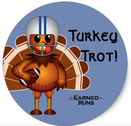 WEEK OF THE RACE: TURKEY TROT 2017 WITH TRACK DAY 5K Beginner Training Plan starts Monday. This will be a busy week for many non-race related reasons. Enjoy the pre-holiday rush. You may want to stretch, foam roll, and go through the MYRTL mobility routine before the race. These activities can be beneficial in the days leading up to competition as well as after. If nerves leave you unable to relax during that time, their performance can help you “do” something other than just rest. GOOD LUCK RUNNING YOUR RACE! Enjoy the thrill of finishing, the pride of accomplishment, and the confidence of athletic performance. The remainder of the weekend will be spent in recovery. RUN HAPPY! An announcement in the RunningUSA.org update email, coming from Abbott World Marathon Majors, includes exciting new for marathon runners of all ages. The item, “Abbott World Marathon Majors Announces Wanda Age Group Ranking System and Championships,” outlines in detail the age groups and dates and locations of races that will generate qualifiers who will participate in the first World Championships in the spring of 2020. Age groups cover men and women from age 40-80+.
It seems as though the effort has been made possible through the partnership of AbbottWMM and the Dalian Wanda Group that was announced in late April 2017. At that time, the reported result of the deal was to bring three major marathon events to Asia within the next 10 years, according to an item in SportsBusinessDaily.com. One event would be in a “yet-to-be-decided marathon in a first-tier Chinese city.” For those of you not familiar with the AbbottWMM, it “is a Series consisting of six of the largest and most renowned marathons in the world”, taking place in Tokyo, Boston, London, Berlin, Chicago, and New York City. The best athletes in the world can therefore compete in the series as well as the sport’s global championship events to earn points. The point system allows determination of the “world’s best male and female marathon runners.” When the Series began in 2006 athletes accrued points over a two-year period. In 2015, the format was changed to a one-year cycle; a point system for elite wheelchair athletes was added in 2016. Non-elite runners, called “Everyday Champions” can also receive recognition in the AbbottWMM. Those who complete all races are honored by as “Six Star Finishers”. They receive a certificate and a medal. The medals are a new part of the glory; they were first awarded in 2016. According to an article in running.competitor.com, earning bragging rights to this accomplishment is not easy or inexpensive. “More than 200,000 people run the marathon major races every year, yet in the past 10 years only about 600 people have run them all.” So says David Mark, the inaugural ceremonial male recipient of the medal, from Chicago IL, an Abbott executive. “It’s a pretty exclusive club and I’m excited there is now a medal to mark the accomplishment.” The first female recipient honored with the medal, Barbara Fleming-Owens from Canfield, Ireland, says it cost her roughly $14,000 (10,00 British pounds) in expenses (fees, travel, and gear, etc) over the years she spent qualifying for, then running the marathons. For those interested in qualifying, the RunningUSA.org article has a detailed listing of events in 2018 through 2019. As of November 15, 2017 the first event is Berlin on September 17, 2018. If you're interested in completing a customized world marathon series, Earned Runs bibs can help with that! RUN HAPPY! http://www.runningusa.org/abbott-wmm-age-groups https://en.wikipedia.org/wiki/Wanda_Group https://www.worldmarathonmajors.com https://en.wikipedia.org/wiki/World_Marathon_Majors http://running.competitor.com/2016/02/news/the-crown-jewel-of-race-medals-world-marathon-majors-debuts-six-star-finisher-medal_146296 http://www.sportsbusinessdaily.com/Global/Issues/2017/04/27/Marketing-and-Sponsors YOU MAY HAVE AWOKEN EARLY TODAY TO RUN, WALK, OR WORKOUT then headed to work, the grocery store, or mall to prepare for Thanksgiving weekend. Or perhaps your run, walk, or fitness session is planned for the later in the day. RunnersWorld.com featured an article that might help keep you going every day of the upcoming, pre-holiday week.
The ‘coffee nap’, as explained by Isadora Baum in her article for Men’s Health “Coffee Naps Are the Energy-Boosting Hack You Didn’t Know You Needed”, seems perfect for dreary fall days. There’s so much to be done in advance of special celebrations it seems. However, with the sun hanging lower in the sky and the decreased chance it will make an appearance during the hours most are outdoors, there’s may not be enthusiasm for the extra effort of exercise during the holiday rush season. Baum explains that the driving research on which this delightful ‘hack’ is based is 20 years old. That the results are old doesn’t make them more or less relevant today, especially if there’s little potential for harm in a personal trial. The instructions are to drink (or eat) a caffeinated beverage (or food) then snooze for 15-20 minutes in mid-afternoon. Don’t try it near bedtime. Keep the total amount of caffeine consumed not more than 400mg per day. That’s all there is to this 'hack'. Baum explains how the timing is key to experiencing the physiological boost. For those who have the luxury of taking afternoon breaks and can find a quiet place to nap, it might be worth a try. For those who don’t, even closing the eyes and clearing the mind after a caffeinated treat seems to be sufficient, as the research abstract reports, “Naps comprising ‘nonsleep dozing’ were still effective.” Possibly afternoon tea + nap, for my Irish friends, might also be delightfully effective, if the caffeine levels are as high. Thanks go to Baum for bringing this research to our attention! RUN HAPPY! https://www.runnersworld.com/sleep/coffee-naps-energy-boosting-hack “Suppression of sleepiness in drivers: combination of caffeine with a short nap.” Reiner LA, Home JA, Psychophysiology. 1997. https://www.ncbi.nlm.nih.gov/m/pubmed/9401427 SCIENTIFIC STUDY NOTE: The UK research study involved measuring sleepiness in 12 (6 men and 6 women) subjects after a “2 hr continuous monotonous afternoon drive in a car simulator”. Subjects were about 23 years old, and did not usually take afternoon naps. To begin with, subjects were initially made “sleepy” (as measured) by a 30 minute “tedious” drive in the car simulator. Next, they were given a decaffeinated coffee beverage at the beginning of a 30-minute break. After the break, they all took the longer 2-hour drive in the simulator. One group consumed decaf to which 200mg caffeine was added and took a less than 15-minute nap while sitting in a driving seat (caffeine + nap). Another group also consumed the decaf + 200mg caffeine beverage but did NOT NAP (caffeine only). A placebo group drank the decaffeinated beverage WITHOUT ADDED CAFFEINE and did NOT NAP. During driving, sleepiness was subjectively recorded every 200 seconds on a 1-9 scale (very alert to very sleepy) and objectively measured by EEG. In addition, the simulator created situations in which the driver had to adjust to road changes while staying in a designated lane. Incidents in which there was “drifting” out of the lane were recorded. The abstract indicated that compared with the placebo (no caffeine/no nap), caffeine alone reduced the peak of afternoon sleepiness in research subjects to 34%, while the caffeine + nap combination “eliminated” the peak and brought sleepiness down to a level of 9%. There are more results, of course, but this is the takeaway message the scientists wanted to provide. AQUABIKE COMPETITION: NO NEED TO RUN to compete or train. Aquabike is not a product. It’s a competition. Think triathlon without the run. This rapidly growing multi-sport event seems to be the refuge of the community of triathletes who find they cannot or don’t want to run.
In addition, the sport provides an opportunity, called ‘race-specific’ training, for athletes to test themselves in the bike and swim sections of a triathlon while saving their running legs for the actual triathlon event. So says Chuck Graziano, who is quoted on the USA Triathlon ‘About’ page which explains the Aquabike competition. Graziano is past chair and current member of the Age Group committee, a USAT Board Member, and an aquabike athlete Older runners are likely to intuitively ‘get’ this sport. Because they are likely to know how difficult it is to train and race faster as they age without incurring injury. Increasing speed means increasing ground reaction forces, especially on the knees. And an article by Ian McMahon for RunningCompetitor.com discusses scientific evidence which indicates running more slowly doesn’t necessarily mean that less impact force will be experienced by the knee. Kathleen Hughes, aged 60, is one such competitor who has discovered Aquabike. In the Wall Street Journal she writes about her motivation to qualify for this event and how she eventually earned the right to wear the official outfit “with my name on the butt" for Team USA. There isn’t much written about this sport that I could find online. The facts, provided by Hughes in her article, explain why we might be seeing more about it; participation in triathlons is decreasing and increasing in aquabike. Running USA has been advising the running industry that, in a similar manner, finishers in road running events continues to decrease. The reasons for declining participation in running events are not known. It’s possible that part of the decline may be due to runners cross-training and ‘cross-competing in sports to preserve their joints and legs to insure a future that includes some running. That seems like a reason in which race directors should find comfort. RUN HAPPY! https://www.wsj.com/articles/forget-triathlons-its-time-for-aquabike-1510542721 https://www.teamusa.org/USA-Triathlon/About/Multisport/Disciplines/Aquabike https://www.teamusa.org/USA-Triathlon/USAT-for-Me/Team-USA/Qualification http://running.competitor.com/2016/07/injury-prevention/how-running-surface-and-speed-influence-injury-risk_153528 http://www.runningusa.org/notes-from-the-road-november-2017 https://runnersconnect.net/masters-runners-run-speed-work/ |
BRIDGE TO PHYSICAL SELF
Running, walking, and fitness activities enable us to experience our physical selves in a world mostly accessed through use of fingers on a mobile device. AuthorEARNED RUNS is edited and authored by me, runner and founder. In 1978 I began participating in 10K road races before 5Ks were common. I've been a dietitian, practiced and taught clinical pathology, and been involved with research that utilized pathology. I am fascinated with understanding the origins of disease as well as health and longevity. Archives
November 2023
CategoriesNew! Search Box
Earned Runs is now searchable! Check it out...
|

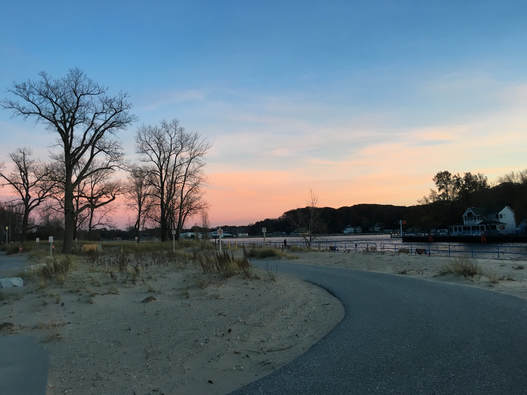
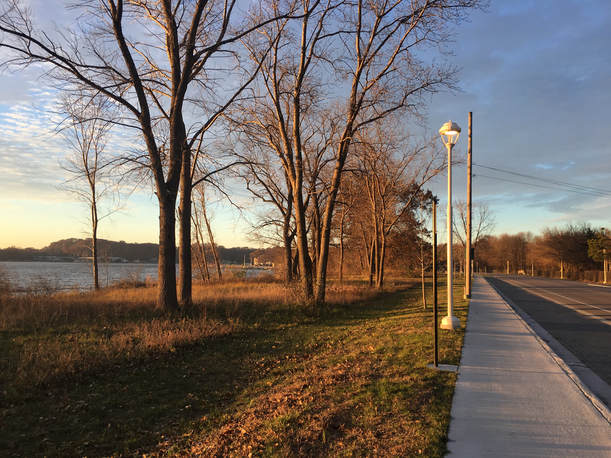

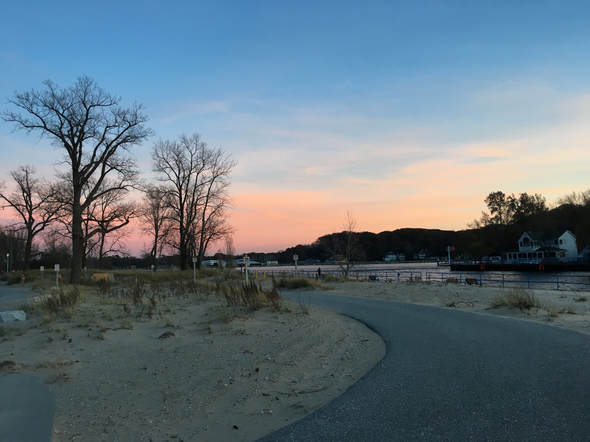
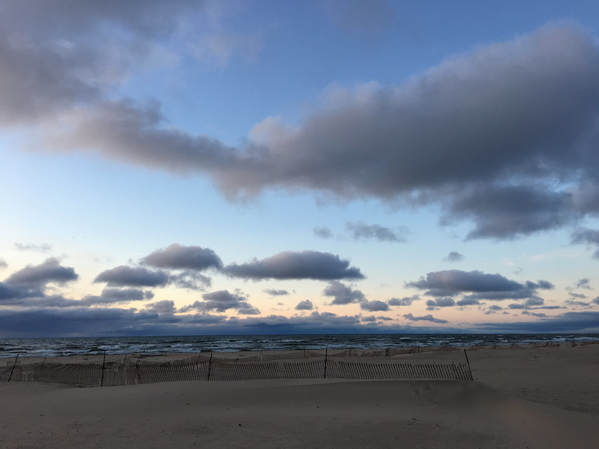
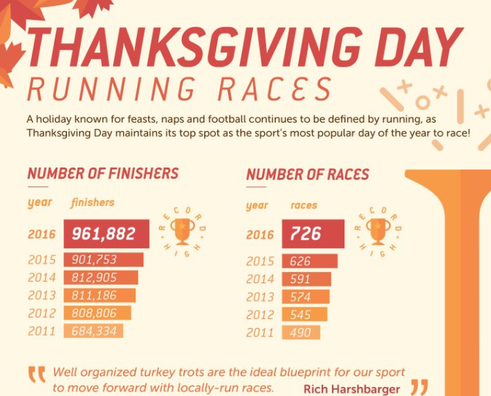
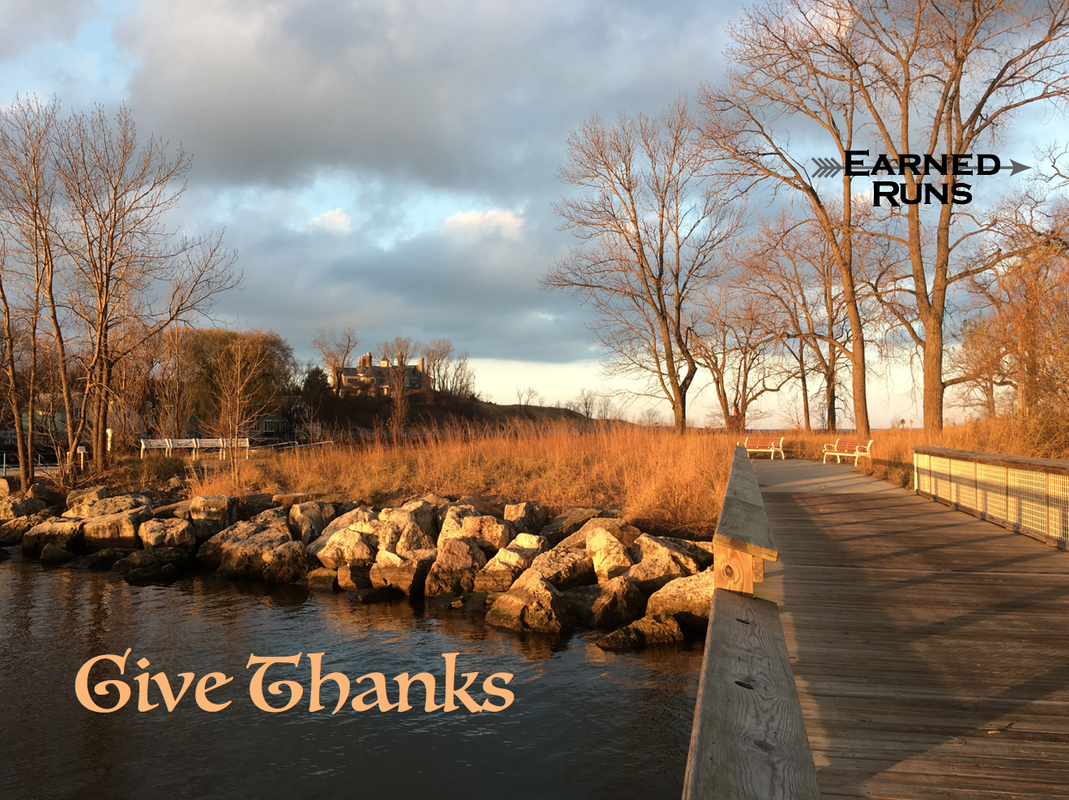

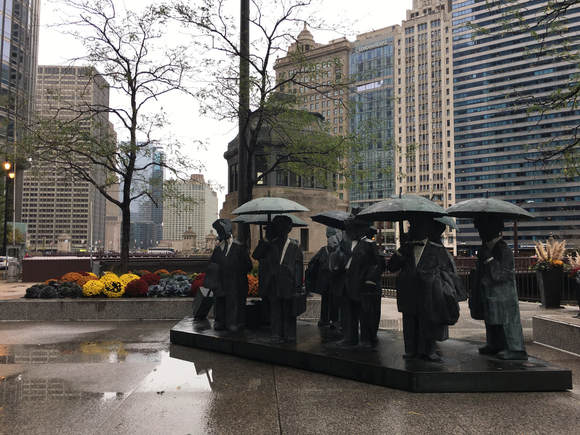
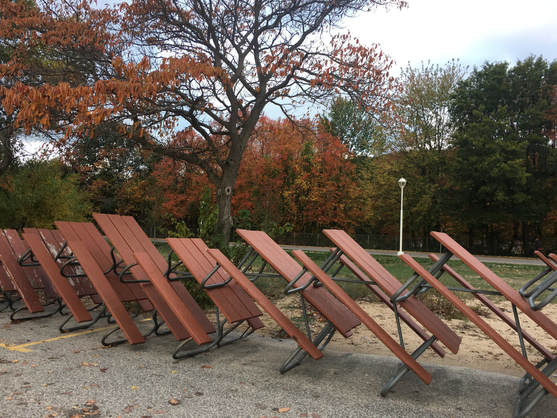
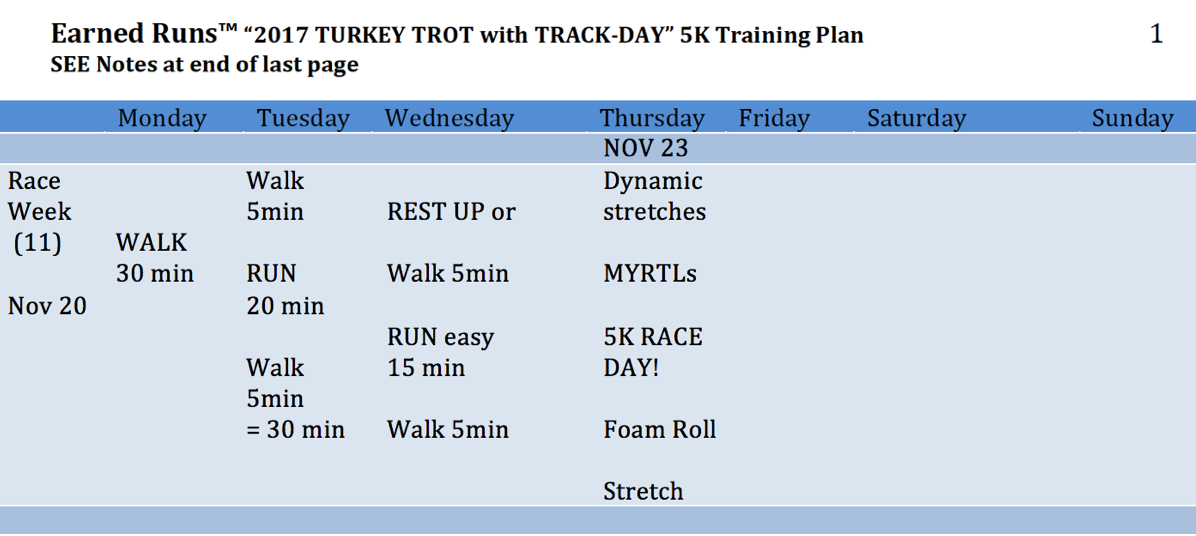
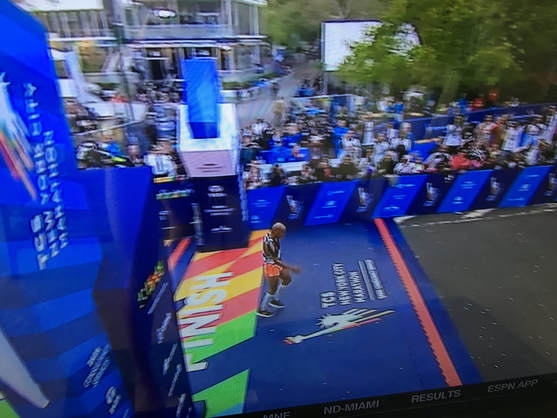


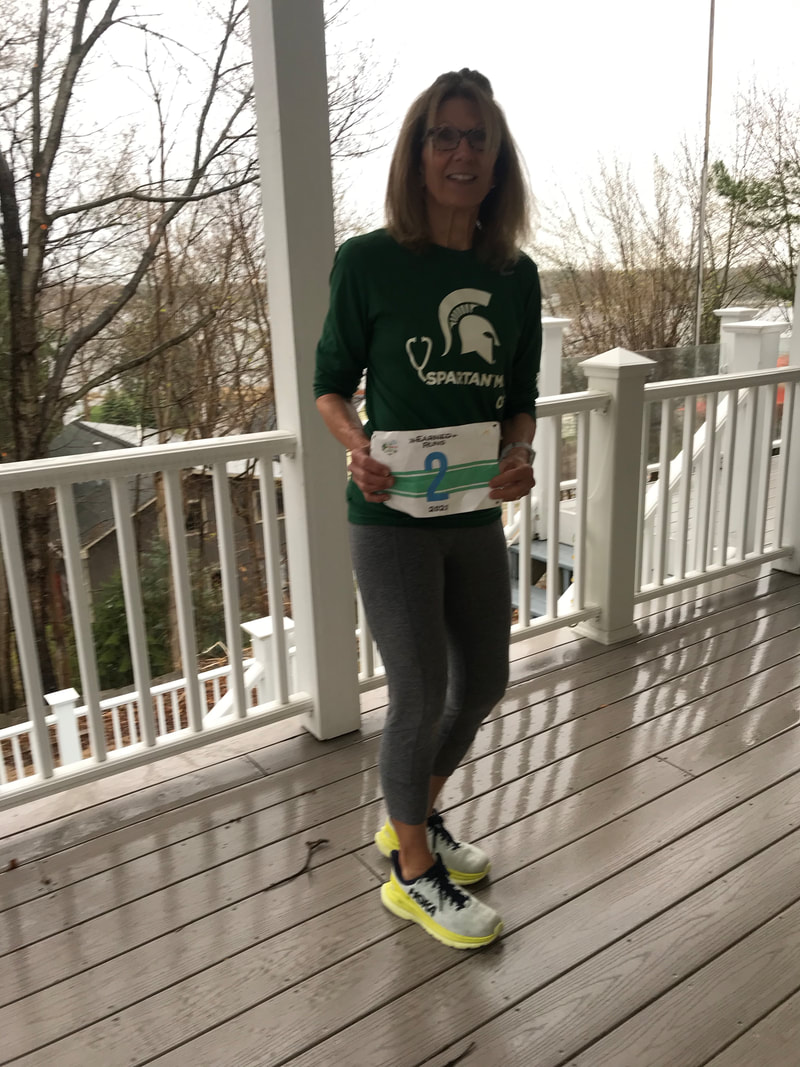
 RSS Feed
RSS Feed